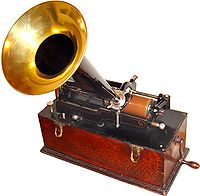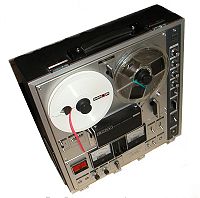Data Storage Device:
A data storage device is a device for recording (storing) information (data). Recording can be done using virtually any form of energy, spanning from manual muscle power in handwriting, to acoustic vibrations in phonographic recording, to electromagnetic energy modulating magnetic tape and optical discs.
Electronic data storage requires electrical power to store and retrieve that data.
Intresting

Most storage devices that do not require vision and a brain to read data fall into this category. Electromagnetic data may be stored in either an analog data or digital data format on a variety of media. This type of data is considered to be electronically encoded data, whether it is electronically stored in a semiconductor device, for it is certain that a semiconductor device was used to record it on its medium. Most electronically processed data storage media (including some forms of computer data storage) are considered permanent (non-volatile) storage, that is, the data will remain stored when power is removed from the device. In contrast, most electronically stored information within most types of semiconductor (computer chips) microcircuits are volatile memory, for it vanishes if power is removed.
Except for barcodes and OCR data, electronic data storage is easier to revise and may be more cost effective than alternative methods due to smaller physical space requirements and the ease of replacing (rewriting) data on the same medium. However, the durability of methods such as printed data is still superior to that of most electronic storage media. The durability limitations may be overcome with the ease of duplicating (backing-up) electronic data.

A reel-to-reel tape recorder (Sony TC-630). The magnetic tape is a
data storage medium. The recorder is data storage equipment using a
portable medium (tape reel) to store the data.
Crafting tools such as paint brushes can be used as data storage
equipment. The paint and canvas can be used as data storage media.
Terminology
Devices that are not used exclusively for recording such as hands, mouths, musical instruments, and devices that are intermediate in the storing/retrieving process, like eyes, ears, cameras, scanners, microphones, speakers, monitors, or video projectors, are generally not considered storage devices. Devices that are exclusively for recording such as printers, exclusively for reading, like barcode readers, or devices that process only one form of information, like phonographs may or may not be considered storage devices. In computing these are known as input/output devices.All information is data. However, not all data is information.
Many data storage devices are also media players. Any device that can store and playback multimedia may also be considered a media player such as in the case with the HD media player. Designated hard drives are used to play saved or streaming media on home cinemas or home theater PCs.
Global capacity, digitization, and trends
In a recent study in Science it was estimated that the world's technological capacity to store information in analog and digital devices grew from less than 3 (optimally compressed) exabytes in 1986, to 295 (optimally compressed) exabytes in 2007,[2] and doubles roughly every 3 years.[3]It is estimated that the year 2002 marked the beginning of the digital age for information storage, the year that marked the date when human kind started to store more information on digital than on analog storage devices.[2] In 1986 only 1% of the world's capacity to store information was in digital format, which grew to 3% by 1993, 25% in the year 2000, and exploded to 97% of the world's storage capacity by 2007.
Data storage equipment
Any input/output equipment may be considered data storage equipment if it writes to and reads from a data storage medium.Data storage equipment uses either:
- portable methods (easily replaced),
- semi-portable methods, requiring mechanical disassembly tools and/or opening a chassis, or
- Volatile methods, meaning loss of memory if disconnected from the unit.










Post A Comment:
0 comments: